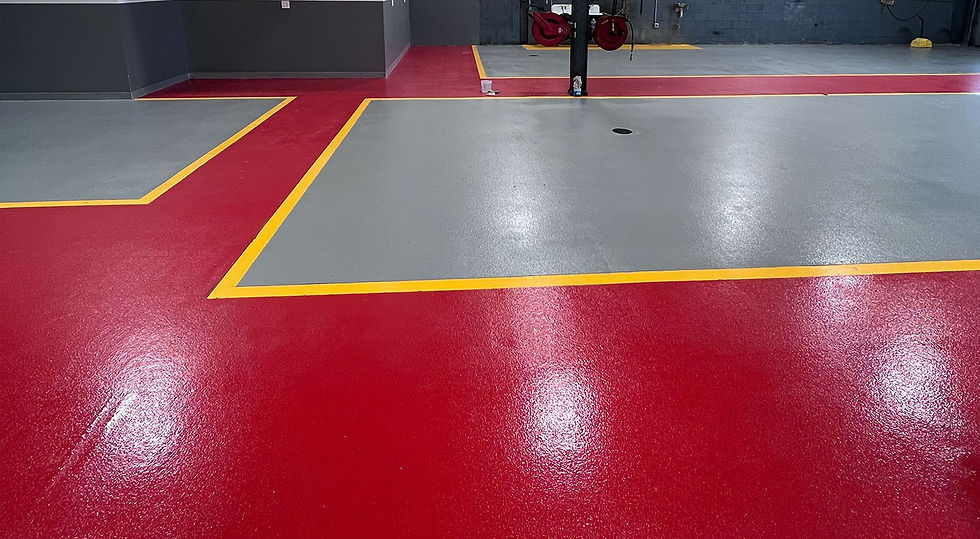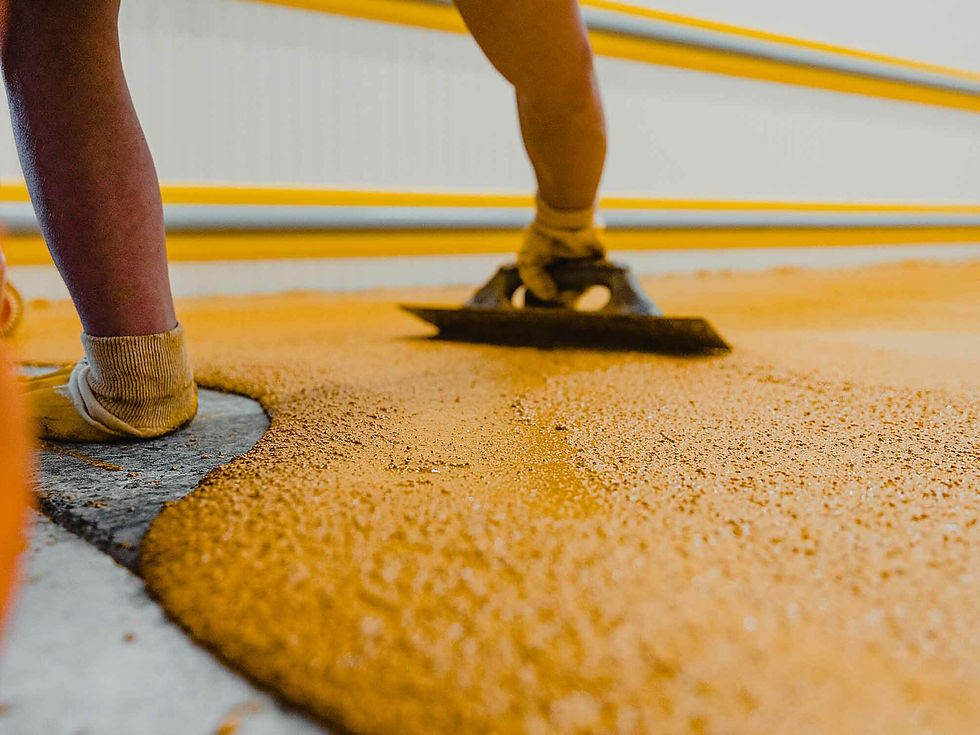Traction Additives 101: Pros & Cons of Aluminum Oxide, Polyethylene, Polycarbide & More
- Amee Curtis

- Aug 29
- 3 min read

Coatings that look great—but slip like ice? That’s a lawsuit waiting to happen.
Whether you're coating a commercial kitchen, pool deck, warehouse, or entryway, traction additives are critical for keeping people upright and your client out of legal trouble.
But how do you choose the right one? From aluminum oxide to polycarbide, different materials offer different levels of grip, durability, and aesthetics.
Here’s your contractor’s guide to understanding, selecting, and applying traction additives the right way.
How Traction Additives Work
Traction additives (also called non-skid or anti-slip media) are broadcast into coatings or mixed in to create surface texture.
They improve the coefficient of friction (COF), helping prevent:
Slips and falls
Trip hazards in wet areas
Equipment slide-outs in vehicle bays
💡 COF is especially important in places like ADA-compliant walkways, OSHA-regulated work zones, and outdoor walkways.
Breakdown of Popular Additives
🔹 Aluminum Oxide
Texture: Very aggressive
Durability: Extremely hard (rated 9 on Mohs scale)
Best For: Industrial zones, ramps, mechanical rooms
Pros: Inexpensive, long-lasting, excellent traction
Cons: Sharp, hard to clean, not decorative-friendly
🛑 Not ideal for decorative or barefoot areas—it feels like sandpaper.
🔹 Polyethylene (PE) Beads
Texture: Mild to medium
Durability: Soft plastic bead, wears over time
Best For: Retail, offices, light-duty interiors
Pros: Easy to clean, low profile, minimal gloss disruption
Cons: Not durable under heavy wear or chemicals
💡 Often used in urethane topcoats to meet basic slip resistance without rough texture.
🔹 Polycarbide
Texture: Medium to aggressive
Durability: Excellent—resists chemicals and wear
Best For: Commercial kitchens, breweries, automotive bays
Pros: Rounded edges = easier to clean than aluminum oxide
Cons: Costs more, limited availability in some regions
🔥 A solid middle ground between industrial performance and customer comfort.
🔹 Quartz Sand (Silica)
Texture: Fine to aggressive (based on mesh)
Durability: Good, but breaks down faster than synthetic media
Best For: Quartz broadcast systems, general-purpose floors
Pros: Readily available, cost-effective
Cons: Can yellow over time, lower hardness rating
⚠️ Avoid in UV-exposed or high-abuse areas without a proper topcoat.
🔹 Glass Beads
Texture: Smooth, mild
Durability: Low—wears quickly
Best For: Decorative, indoor residential, low-use zones
Pros: Adds reflectivity and sparkle to metallic systems
Cons: Not functional for real slip prevention
Choosing the Right Additive
Use Case | Recommended Additive |
Industrial Warehouse | Aluminum Oxide |
Commercial Kitchen | Polycarbide or Quartz |
Office or Retail | Polyethylene |
Outdoor Walkway | Aluminum Oxide or Quartz |
Pool Deck or Spa | Polycarbide or PE beads |
Decorative Flake System | Light PE or Glass Beads |
🎯 Always consider both foot traffic and cleaning expectations when selecting your grit level.
Application Tips
Mix-In vs Broadcast: Broadcast gives better control and visibility. Mix-in works best for light additives in thin mil coatings.
Backroll everything to embed media and avoid loose particles
Test your coverage on a sample board to match desired slip + feel
Topcoat to lock in—especially with flakes or broadcast quartz
Conclusion
Traction additives can make or break a floor’s performance, especially when safety is non-negotiable. From warehouses to walkways, the key is finding the right balance between grip, durability, and cleanability.
PNW ECS stocks the most popular traction media—and we’ll help you spec the best one for your coating system.
📍 Need Help Picking Grit?
Stop by Sandy or Fife and we’ll walk you through your options by texture, durability, and visual effect.




Comments